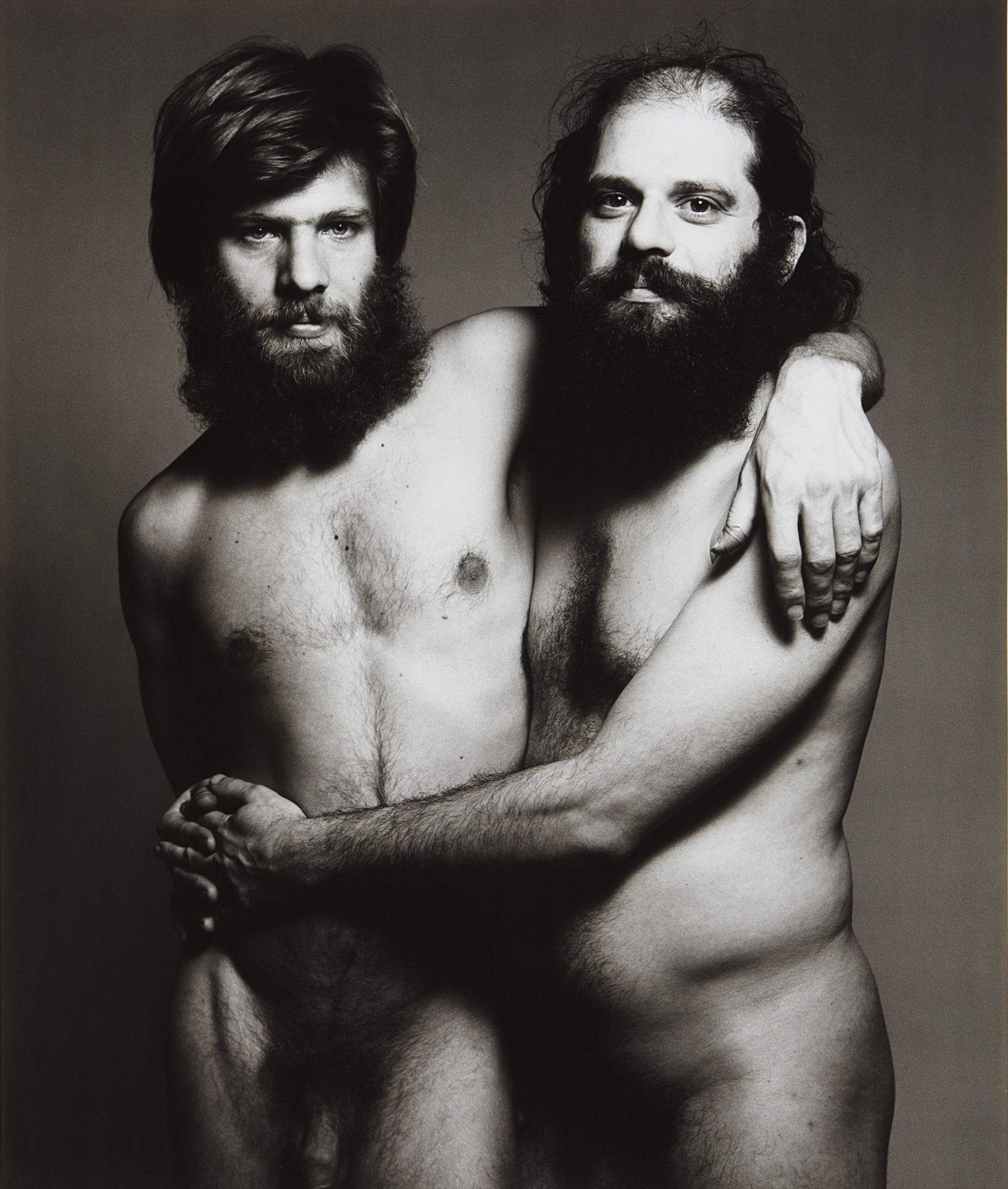

45
Richard Avedon
Allen Ginsberg and Peter Orlovsky, poets, New York City, December 30
Full-Cataloguing
becoming one of a series of small victories for the Gay Liberation movement that would gain great momentum in the 1960s. Richard Avedon, himself a rule-breaker and a revolutionary within his own realm, was drawn to the rebellious spirit of the movement and to Ginsberg’s outspoken coming out, inviting the writer and his longtime partner, Peter Orlovsky, for a portrait at his studio.
The two men are locked in a loving embrace, nude, warmly returning the gaze of the photographer. The seeming ease and comfort that Avedon deftly captured alludes not only to their familiarity with one another, but the egalitarian eye with which gay couples gradually demanded to be viewed. Preceding the 1969 Stonewall riots that launched the Gay rights movement to the foreground of American politics, the image became a loving emblem of the movement. In a pre-digital, pre-internet era, Avedon’s portrait of the gay couple enjoyed wide circulation in the community, first featured on the cover of liberal publicationEvergreen Reviewin 1970, and later
inside the publicationGay Sunshine Collectiveand lastly, as the frontispiece of Ginsberg’s anthology bookStraight Hearts Delight. Expressing his love for the photograph, in a letter to Avedon, Ginsberg wrote, “Your photo is straight. That’s why it’s good. It has the aura of 1890’s Tennysonian or Whitman photos, so it would be appropriate as an old-fashioned frontispiece to such literary memoir book (which is) both anthology of our sexual poetries and compilation of unselfconscious letters of ‘50’s and early‘60’s about love and literature.” Arguably exceeding his own expectations, Avedon created an image whose relevance fifty years after it was first created
remains undiminished.
Richard Avedon
American | B. 1923 D. 2004From the inception of Richard Avedon's career, first at Harper's Bazaar and later at Vogue, Avedon challenged the norms for editorial photography. His fashion work gained recognition for its seemingly effortless and bursting energy, while his portraits were celebrated for their succinct eloquence. "I am always stimulated by people," Avedon has said, "almost never by ideas."
Indeed, as seen in his portraits — whether of famed movie stars or everyday people — the challenge for Avedon was conveying the essence of his subjects. His iconic images were usually taken on an 8 x 10 inch camera in his studio with a plain white background and strobe lighting, creating his signature minimalist style. Avedon viewed the making and production of photographs as a performance similar to literature and drama, creating portraits that are simultaneously intensely clear, yet deeply mysterious.